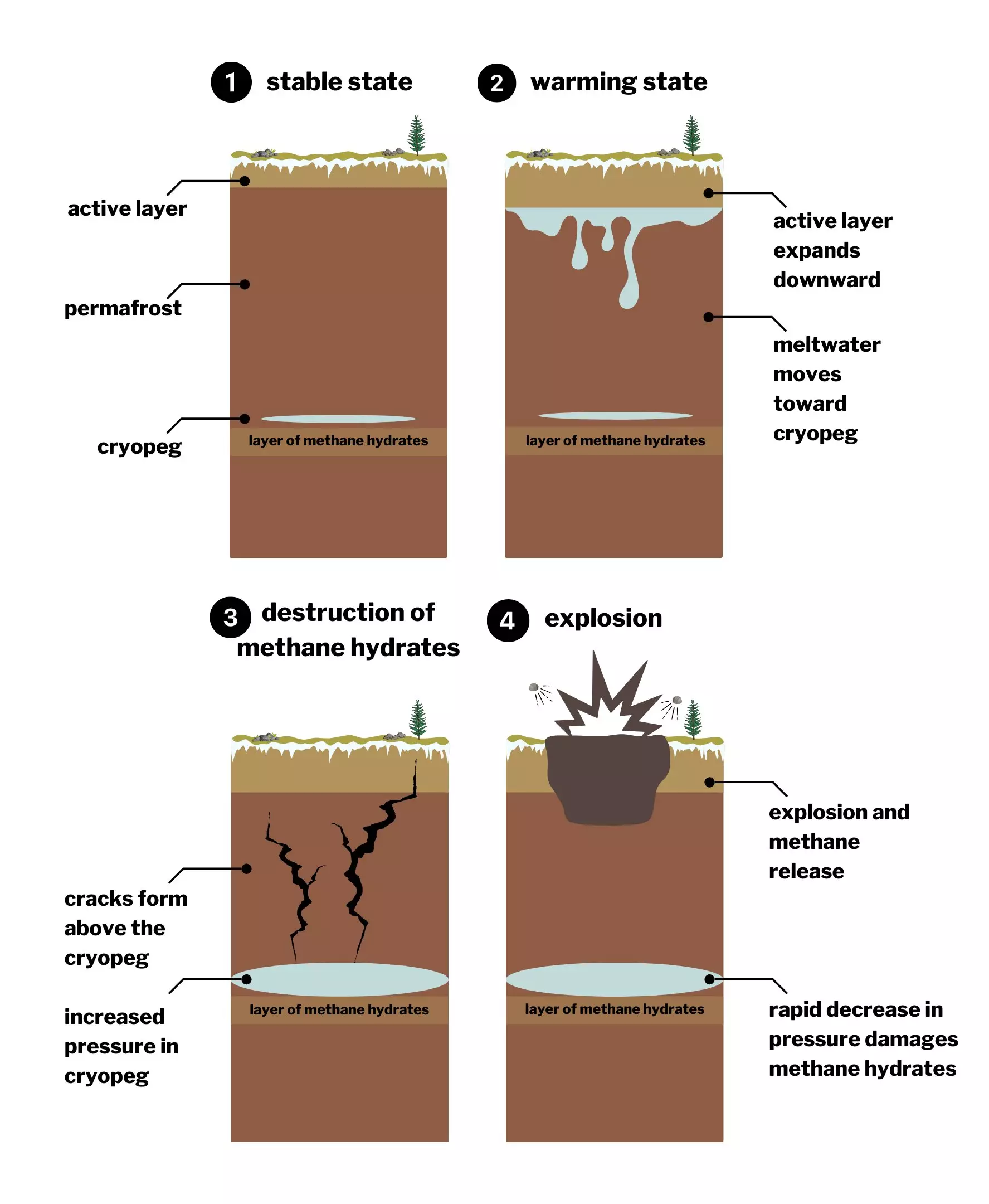In 2014, the world was introduced to an extraordinary phenomenon: the sudden appearance of large craters in the Siberian permafrost, specifically on the Yamal Peninsula. Initially regarded with intrigue and a hint of alarm, these geological anomalies have long been the subject of countless theories regarding their origin. A recent study has provided an insightful and detailed examination of these craters, attributing their formation to a confluence of climate change and the unique geological characteristics of the region.
This fresh analysis highlights how climate-induced changes have not only affected surface temperatures but have also instigated significant pressure alterations deep within the Earth’s crust, resulting in the dramatic release of methane gas trapped in permafrost.
The Yamal Peninsula is characterized by its low-lying topography and unique geological features, which have converged to create conditions ripe for the formation of craters. At the heart of this study is the understanding that the region’s permafrost, which includes layers called cryptopeg that host liquid water under significant salinity and pressure, plays a crucial role. Researchers have pointed out that the undercurrents of geochemical reactions within the permafrost are less responsible for crater formation than previously thought and place emphasis on the physical processes that lead to explosive methane release.
Ana Morgado, a chemical engineer involved in the study, emphasizes that the existence of craters is a product of highly specific geological circumstances. This combination makes the craters distinctive to the Yamal Peninsula and hard to replicate elsewhere.
Understanding the science behind these explosions involves delving into the physical processes that contribute to pressure buildup. Julyan Cartwright, another researcher, highlighted that the craters were formed neither by chemical breakdown nor by external force; instead, the phenomenon could be likened to a scenario where a bicycle tire is over-inflated until it bursts. Here, however, the mechanism responsible for this “pumping” effect is osmotic pressure.
As the active layer of seasonally thawed soil expands downward in response to the warming climate, it encounters layers of cryopeg below. The interaction causes freshwater to percolate into the cryptopeg layer, increasing salinity and consequently raising internal pressure. The thick clay layers of permafrost act as an effective barrier, creating the ideal conditions for osmotic-driven pressure to accumulate.
When the pressure becomes too great, it generates cracks through the soil layers, allowing gas to escape and resulting in explosive events. This cascading failure emphasizes the critical interplay between climatic changes and geological formations in the region.
One of the more fascinating insights from the study is the timeline over which these events occur. The atmospheric transformations prompted by climate change, particularly escalating temperatures since the 1980s, technologically correlate with the gradual development of these pressures and eventual eruptions. This duration, spanning decades, underscores that these craters are not simply random occurrences but rather the protracted culmination of climatic shifts and geological responses.
Such a lengthy process challenges the notion that environmental changes manifest instantaneously. Instead, it reveals a slow-burning crisis that exemplifies the urgency of climate change, wherein invisible alterations within the Earth can culminate in dramatic surface phenomena.
The implications of this new understanding of the Yamal craters extend beyond localized geology. The susceptibility of permafrost regions to climate change highlights critical risks surrounding methane release, a potent greenhouse gas that exacerbates global warming. Although these craters may be geographically confined to unique environmental conditions, the lessons learned from their formation offer invaluable insights for similar regions around the world experiencing warming and permafrost degradation.
As Morgado thoughtfully notes, the rarity of such explosive phenomena reminds us of the complexities of environmental processes and the unpredictability that comes with climate change. The study invites further research into the connections between climate dynamics and geological phenomena, echoing a broader call for awareness regarding these under-explored interactions.
The study of the explosive craters emerging in the Siberian permafrost is a vivid illustration of the pressing challenges posed by climate change. It serves as both a scientific breakthrough and a critical reminder of the intricate and delicate balance within our ecosystem. As we continue to analyze the ramifications of a warming planet, the Yamal Peninsula’s craters stand as vivid testimonies to the unseen forces that shape our world and the urgent need for ongoing environmental stewardship. Understanding these phenomena not only enriches our geological comprehension but also propels meaningful discourse on combating climate change on a global scale.

